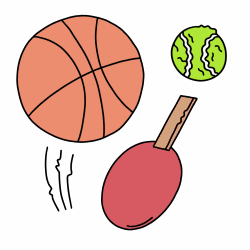U Sports broke historic ground with their decision to introduce a new policy aimed at making university sport more accessible to trans athletes. The policy came into effect Sept. 26 and affects all 56 universities under the governing body.
The new policy will allow all athletes to compete according to their gender identities. The policy will not require that athletes undergo hormone treatment in order to participate in the sport in the category that matches their gender identity.
However, the policy does require that athletes meet the requirements of the previously established Canadian Anti-Doping Program, which is facilitated by the Canadian Centre for Ethics in Sport. For athletes who are undergoing medical transition or hormone treatment, this contingency may become a barrier.
For athletes that take estrogen, the process is pretty simple, as estrogen is not a banned substance under the Canadian Anti-Doping Program. There are a few related substances that do fall under the list of prohibited substances, though, and testosterone is a banned substance in and of itself. Despite these being prohibited substances, there are ways that athletes using them can still compete.
The Canadian Anti-Doping Program may prohibit the use of testosterone and other substances regularly, but therapeutic-use exemptions allow athletes to take prohibited substances that are essential for their health. Therapeutic-use exemptions are not solely limited to trans athletes and are used by athletes that need medications for a variety of reasons.
Therapeutic-use exemptions allow athletes to apply for the ability to use a prohibited substance and still compete. The program refers to the World Anti-Doping Agency for their guidelines on these therapeutic-use exemptions, which consists of several categories — one of which specifically concerns trans athletes. The guidelines outline a variety of ways that trans athletes can be permitted to take testosterone with an approved therapeutic-use exemption.
These exemptions require extra paperwork and monitoring for the athlete. Forms must be filled out for individual substances, making for duplicate work — i.e., filling out multiple copies of the same form — for athletes taking more than one substance on the prohibited list. Despite the difficulty, however, it is still possible that they could take the testosterone they need while not breaking the anti-doping rules, so long as the proper paperwork and monitoring is done.
When it comes to the responsibility of providing a complete record of testosterone delivery method, dosage, dates and information regarding the personnel giving injections, if applicable, the onus falls on the athlete. This data allows for proper drug testing — which occurs at random at least 1 to 2 times per year.
Additionally, athletes are not allowed to play for more than one gender category per season, nor can they switch mid-season, but they can choose to change categories for the next year. This flexibility should allow trans athletes to be on the team they feel most comfortable being a part of.
Overall, the policy is the result of years of work put in by the U Sports Equity Committee — which has been drafting the policy since 2016. While the policy is thorough and is certainly a step forward for the inclusion of trans athletes in university sport, the true functionality of the policy will only be revealed following some trial and error.
—
Jack Thompson / Sports & Health Editor
Graphic: Jaymie Stachyruk / Graphics Editor